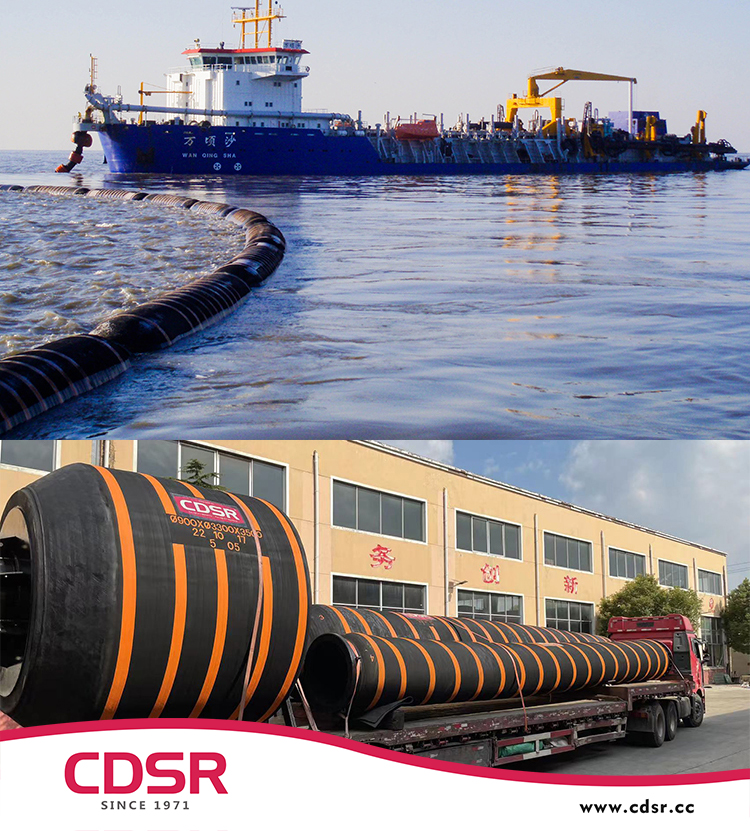Mmechanické bagrovanie
Mechanické bagrovanie je proces vyťahovania materiálu z miesta ťažby pomocou bagrovacieho stroja. Najčastejšie ide o stacionárny stroj s lopatou, ktorý vyberie požadovaný materiál predtým, ako ho dopraví do triediacej oblasti. Mechanické bagrovanie sa zvyčajne vykonáva v blízkosti pobrežia a používa sa na odstránenie sedimentov na súši alebo na pobreží.
Hydraulické bagrovanie
Počas hydraulického bagrovania, čerpadlá(zvyčajne odstredivé čerpadlá)sa používajú na odstraňovanie sedimentov z vybagrovaného miesta. Materiál sa nasáva do potrubia zo dna kanála. Sediment sa zmieša s vodou, čím sa vytvorí zmes bahna pre jednoduchšie čerpanie. Hydraulické bagrovanie nevyžaduje žiadne ďalšie prepravné médiá ani zariadenia, pretože sediment sa môže prepravovať priamo do zariadenia na pevnine, čo šetrí ďalšie náklady a čas.
Životopis-bagrovanie
Biobagrovanie je použitie špecifických organizmov (ako sú určité mikroorganizmy, vodné rastliny) na rozklad a degradáciu organických látok a sedimentov v odpadových vodách.Napríklad, využívanie umelo vybudovaných mokradí môže využiť funkciu mokradných rastlín a mikroorganizmov na degradáciu organickej hmoty a suspendovaných látok v odpadových vodách. Nerieši však akumuláciu anorganických pôdnych častíc, ktoré môžu byť hlavnou príčinou zaťaženia sedimentmi a zmenšovania hĺbky v mnohých rybníkoch a jazerách. Tieto typy sedimentov je možné odstrániť iba pomocou mechanických bagrovacích zariadení.
Hadice CDSR pre bagrovanie je možné použiť na rýpadlo s rezačkou a ťahané sacie násypné rýpadlo
Cúplné sacie bagre
Sací bagr (CSD) je špeciálny typ hydraulického bagru.Ako stacionárny bagr je CSD vybavený špeciálnou rotačnou rezacou hlavou, ktorá reže a rozbíja tvrdé sedimenty a potom nasáva vybagrovaný materiál cez saciu hadicu na jednom konci a preplachuje ho priamo na miesto zneškodnenia z výtlačného potrubia.
CDCjeefektívne a nákladovo efektívne,toMôžu pracovať v širokom rozsahu hĺbok vody a ostré ozubené čepele ich robia vhodnými pre všetky druhy pôdy, dokonca aj pre skaly a tvrdú zem. Preto sa široko používajú pri rozsiahlych bagrovacích projektoch, ako je prehlbovanie prístavov.
Tzábradlie sací násypník bagr
Závesný sací zásobník Bagr (TSHD) je veľký samohybný nakladací nestacionárny bagr vybavený vlečnou hlavicou a hydraulickým sacím zariadením. Má dobrý navigačný výkon a dokáže sa sám poháňať, sám nakladať a sám vykladať.Sada fúkacích hadíc CDSR je dôležitou súčasťou systému predného fúkania na ťahanom sacom násypnom bagrove (TSHD). Zahŕňa sadu flexibilných hadíc pripojených k systému predného fúkania na TSHD a plávajúcemu potrubiu.
Bagrovací stroj TSHD je vysoko obratný a najvhodnejší na bagrovanie sypkých materiálov a mäkkých pôd, ako je piesok, štrk, kal alebo hlina. Vďaka svojej flexibilnosti a efektívnej prevádzke aj v rozbúrených vodách a v oblastiach s vysokou premávkou sa často používa v hlbokomorskom prostredí a pri vstupe do morských priechodov.

Dátum: 04. septembra 2023





 中文
中文